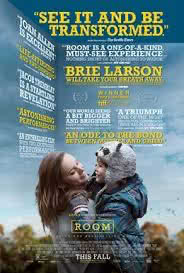Room

Exploring childhood and understanding the mother-child bond is an important dimension of most forms of psychotherapy. Discussing child development and the significance of a secure emotional attachment can often help therapy clients gain insights about their adult selves, as well as the strengths and challenges of their unique parental bonds. Understanding these complex dynamics can lead to insights about current life experiences and is sometimes a catalyst for emotional breakthroughs and concrete change.
Director Lenny Abrahamson’s 2015 film Room (now available on-demand) is one of the most creative, illuminating artistic renderings of the mother-child bond and the impact of early childhood experiences. Adapted from Emma Donoghue’s 2010 award winning novel of the same name, the first half of the film takes place in a tiny shed lit by a diminutive skylight that provides captives Jack (Jacob Tremblay) and his mother (Brie Larson) their only lens into life beyond the contained walls of the cramped prison that is their home. The film opens on Jack’s fifth birthday and the story is told through Jack’s naive and warped perspective. Viewers soon learn that he was born in this confined room and has never once been outside. He has never seen his reflection in a mirror and each morning he says hello to his sink and his plant who are two of his “friends”. His mother makes sure he takes vitamins and does daily exercises which include yoga stretches and running back and forth between the short distance from one side of the room and then back to the other. She teaches him to read. Alice in Wonderland is one of their few possessions and offers an ironic backdrop. She brushes Jack’s teeth with precision despite the fact that her own teeth are rotting out, which she deals with by insisting on “mind over matter.” She has Jack sleep in a closet each night when their captor, Old Nick (Jack’s father), arrives each evening to rape her and to drop off puny rations of eggs, bread and peanut butter.
Despite the wretched conditions of their existence, Jack does not know they are prisoners. His mother uses leftover eggshells, paper towel rolls and strings to construct toys. She contains her terror and distress and allows Jack to assume that their room represents a reasonable — sometimes even a joyous — existence. What Room does so well is demonstrate the obvious: for each child, regardless of their life circumstances, the mother is their early psychological world. If a child forms a secure emotional attachment, then theywill feel safe and thus develop the ability to mature emotionally and manage anxiety.
When Old Nick stops bringing vitamins for Jack and laments his inability to find a new job after several months of unemployment,Jack’s mother realizes she must hatch a risky plan to escape before Old Nick leaves them to die. Therefore, she must come clean with Jack about the tortured truth of their existence and help him prepare to face the world.
Of course, all parents go through this agonizing process in subtler, less dramatic ways. The stellar acting, cinematography, and an agonizing plot use unconventional but convincing extremes to meticulously explore the metaphor of parental separation. Worthwhile messages about parenting, separation and the fear of letting go lace Abrahamson’s film with important messages about parenting and attachment.
